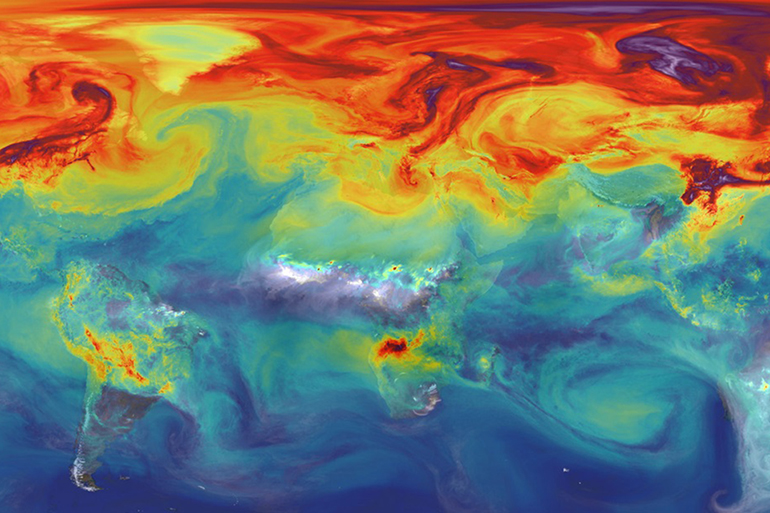
Climate Change and Sustainable Urbanisation
Sustainability includes many societal and scientific fields in view of having four interrelated dimensions: social, economical, ecological and environmental as well as cultural. Climate change is a reality that is already having significant effects on all of these, and the work and research of Mistra Urban Futures reflect this in various ways.
The outcome of the COP21 meeting in Paris, two years ago was not one but several milestones, also within the field of sustainable urban development, and the links between climate change and urbanisation have been even more emphasised since then. Not least the resources and potentials of cities and other organisations than countries have been highlighted; the growing insight that cities and urban regions may be well positioned and ready to be more involved in meeting the serious challenges ahead. Some of the side-events reflected both ambitions and capacity of cities and regions to join forces for the future. Mistra Urban Futures and its partners, e.g. in the Gothenburg Consortium, participated in some of them at the time and will be part of the IPCC Cities and Climate Change meeting in Edmonton, Canada, in March 2018.
'Realising Just Cities' is also about the unevenly shared consequences of climate change; the undermining of built environment, sea level rise and extreme weather to which vulnerable groups in vulnerable areas are most at risk.
Mistra Urban Futures is well prepared to play a role; several of the Centre’s projects across all our research platforms already have a specific and direct climate change perspective, and others are being planned. Some examples:
- Gothenburg: the WISE - Well-being in Sustainable Cities - project had a significant impact, as it has also succeeded in reaching a wider audience through media, including television and papers. The project forms part of the basis for a UN initiative on Sustainable Lifestyles that is being developed.
- Sheffield-Manchester: the #biospheric projects and other activities aiming at raising the awareness of sustainable food production and lifestyles by supporting and disseminating results from local co-created projects concerning food poverty and possible solutions in some areas of Greater Manchester.
- Kisumu: The Eco-tourism and Market Places projects have a solid basis in capacity building, as the core of the projects focus on livelihoods in a changing climate and transformation from a poor city and surrounding communities to vibrant municipalities with a range of opportunities for wealth creation through e.g. tourism, craft-based industries and other options alongside the traditional fisheries.
- The Cape Town Local Interaction Platform initiated a Climate Change Think Tank that had its first meeting in 2013, convened by the Western Cape premier. The meeting coincided with the release of ’Climate Change at the City Scale’, edited by Mistra Urban Futures researchers in Cape Town.
Indirectly, the projects, events, platforms and plans reflect the climate change dimension of Sustainable Urban Development is many ways. African cities have been identified by the IPCC as the areas most vulnerable to environmental risks, including the effects of global climate change. The two Local Interaction Platforms in Africa, Cape Town and Kisumu, both address these issues, although in different contexts and with different means, based on the situation of each of these cities.
The City Lab Programme in Cape Town has a Climate Change profile, expressed e.g. in publications from the programme. A specific Climate Change CityLab engaged with the climate change issues; other CityLabs include climate change in each CityLab’s particular focus. This has been a specific success of the programme: to be able to change the mind-sets of city officials from a climate change as an environmental issue only, to something that affects the whole city.
In a similar way, the Knowledge Transfer Project, with its exchanges of academics and city officials between their respective places of work, has created a greater ability to address energy and climate change issues.
Link
PICTURE from NASA: NASA is advancing new tools like the supercomputer model that created this simulation of carbon dioxide in the atmosphere to better understand what will happen to Earth's climate if the land and ocean can no longer absorb nearly half of all climate-warming CO2 emissions. Earth's land and ocean currently absorb about half of all carbon dioxide emissions from the burning of fossil fuels, but it's uncertain whether the planet can keep this up in the future. NASA's Earth science program works to improve our understanding of how carbon absorption and emission processes work in nature and how they could change in a warming world with increasing levels of carbon dioxide and methane emissions from human activities. For more information about NASA's Earth science programs, visit: http://www.nasa.gov/earth